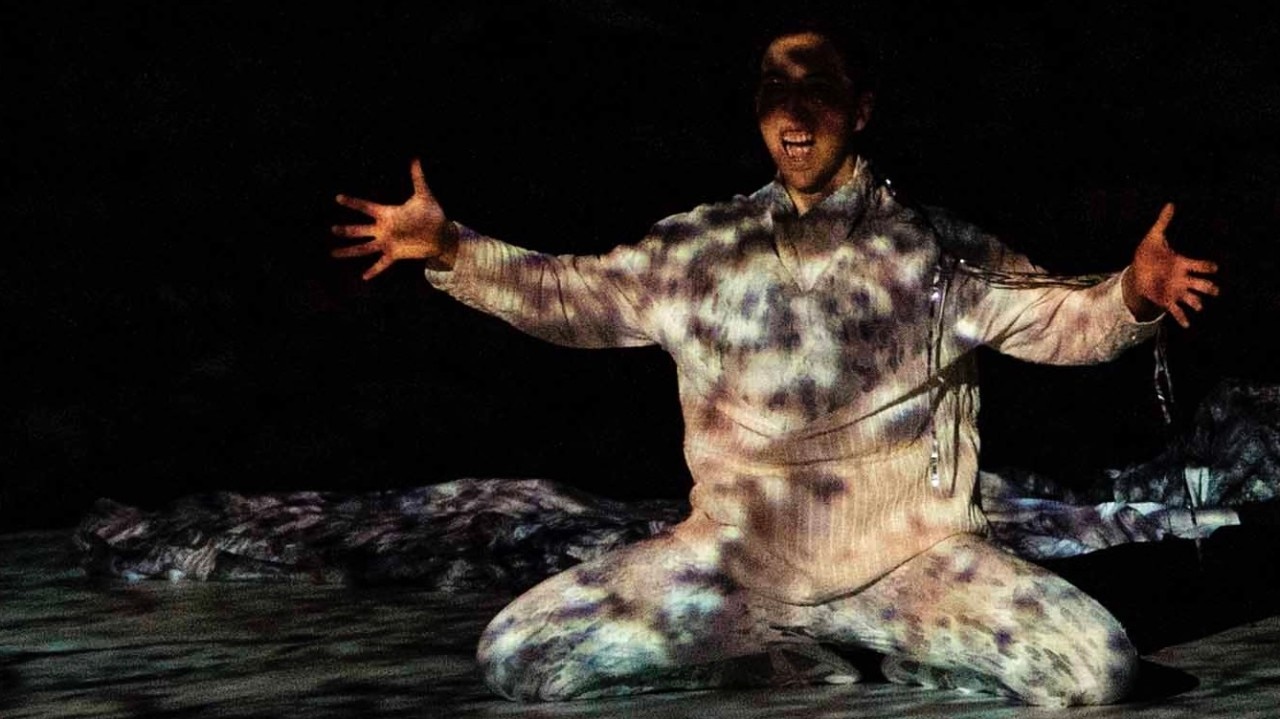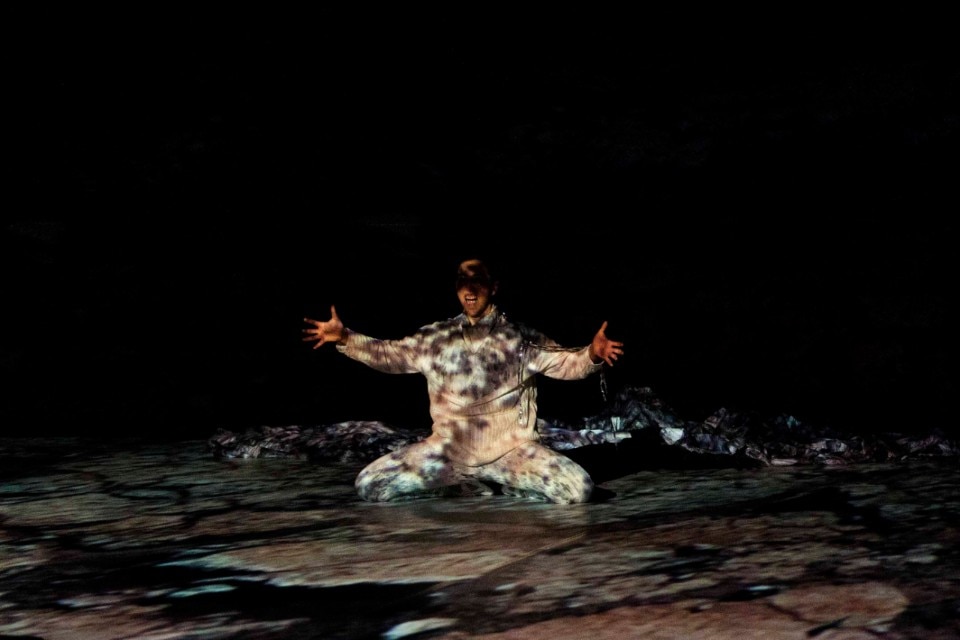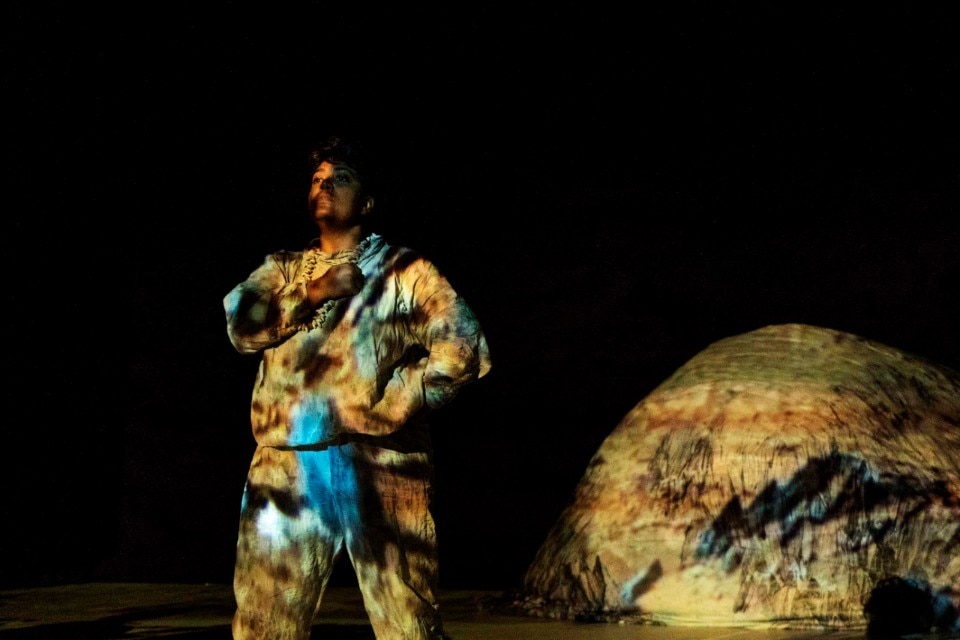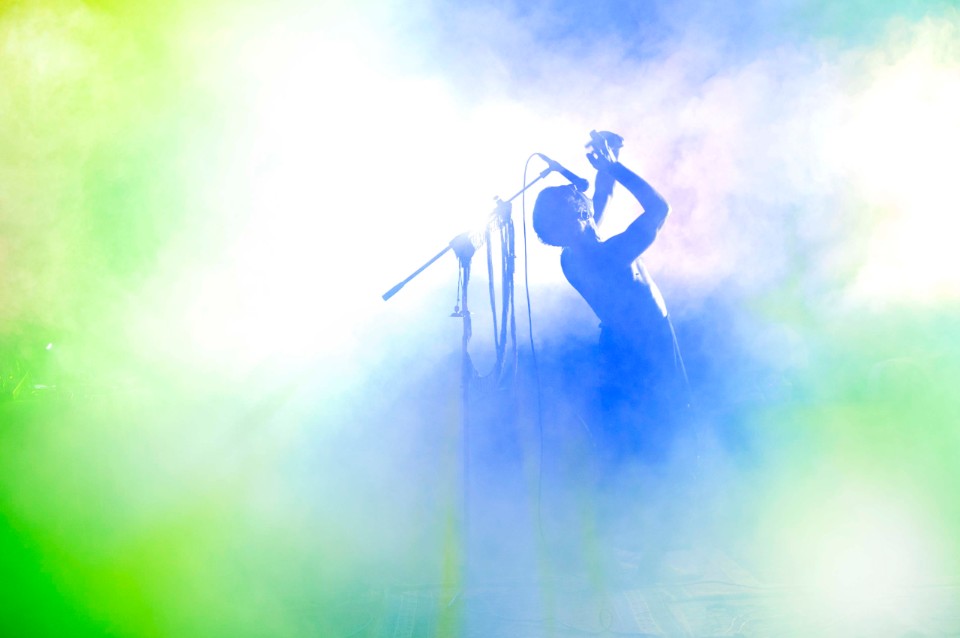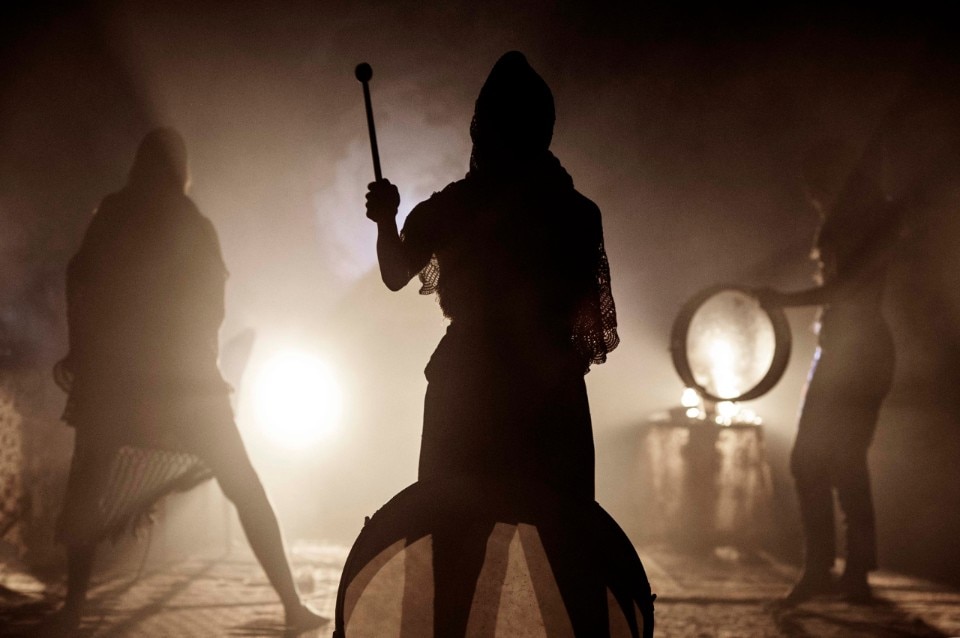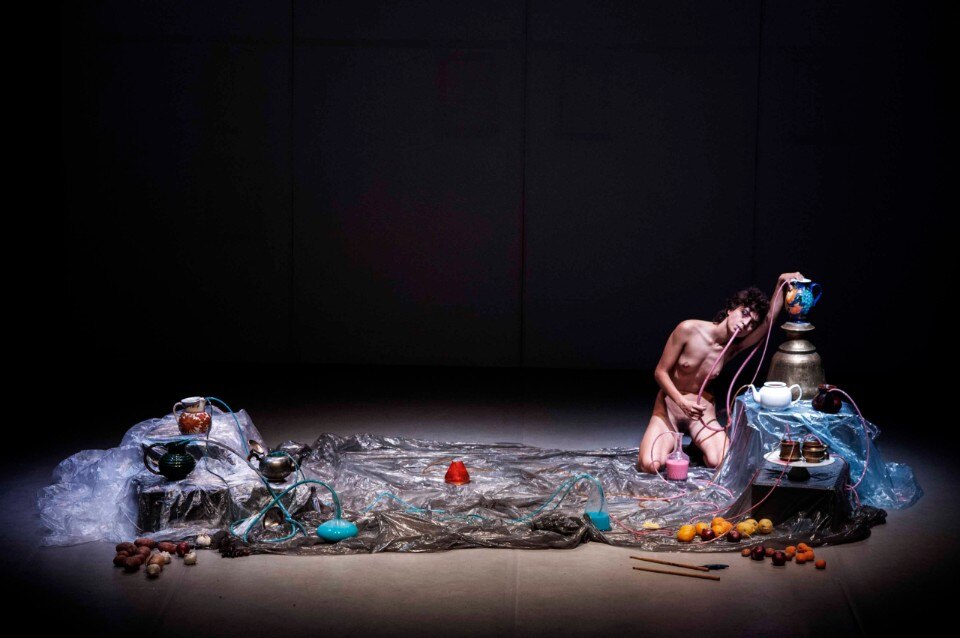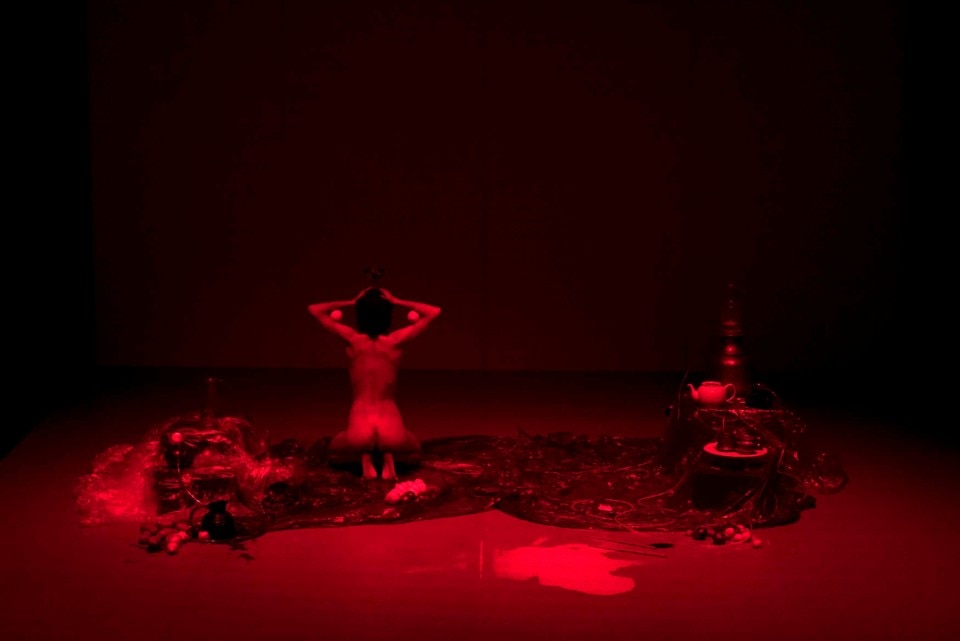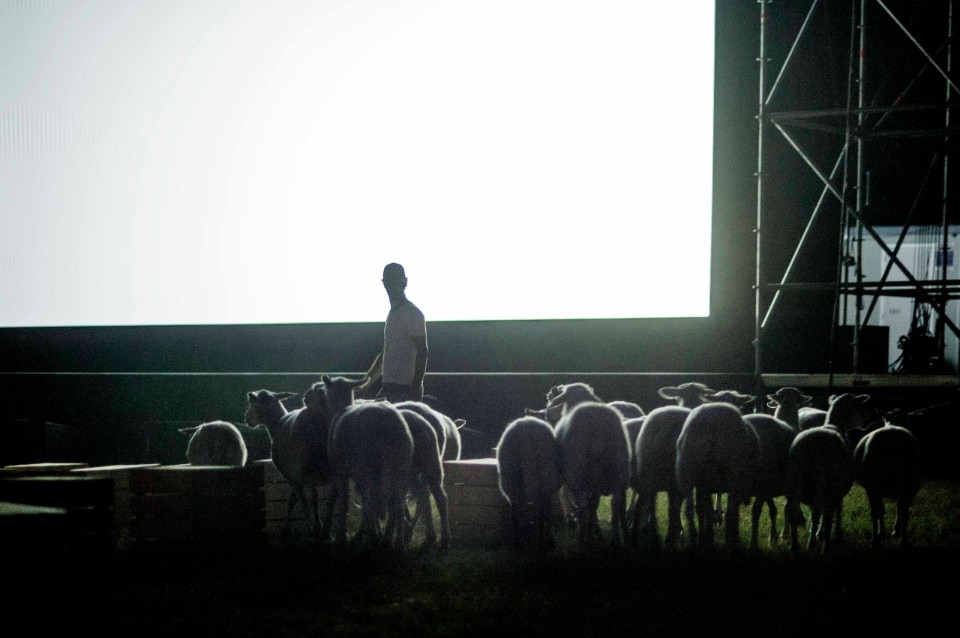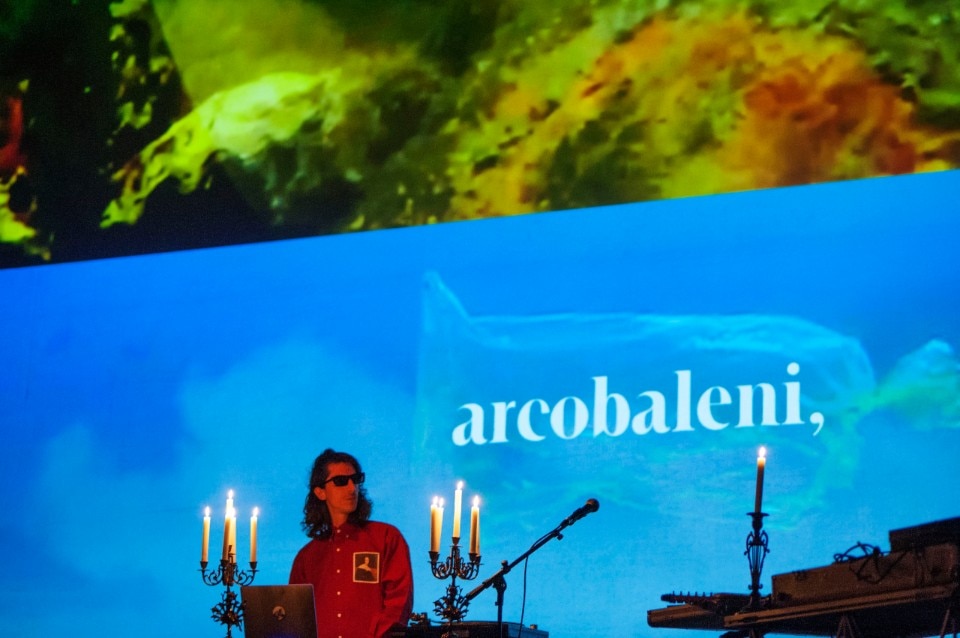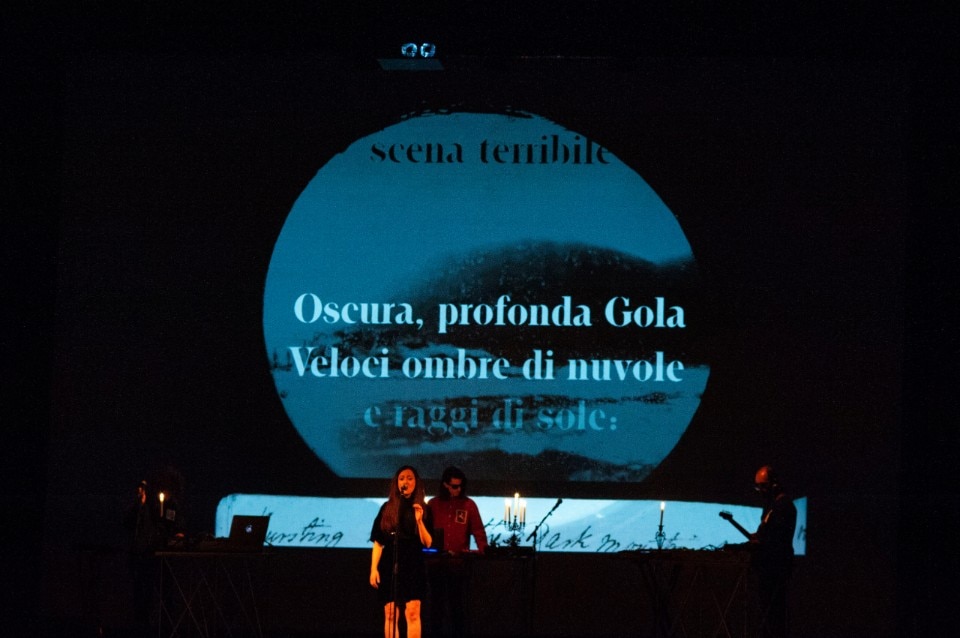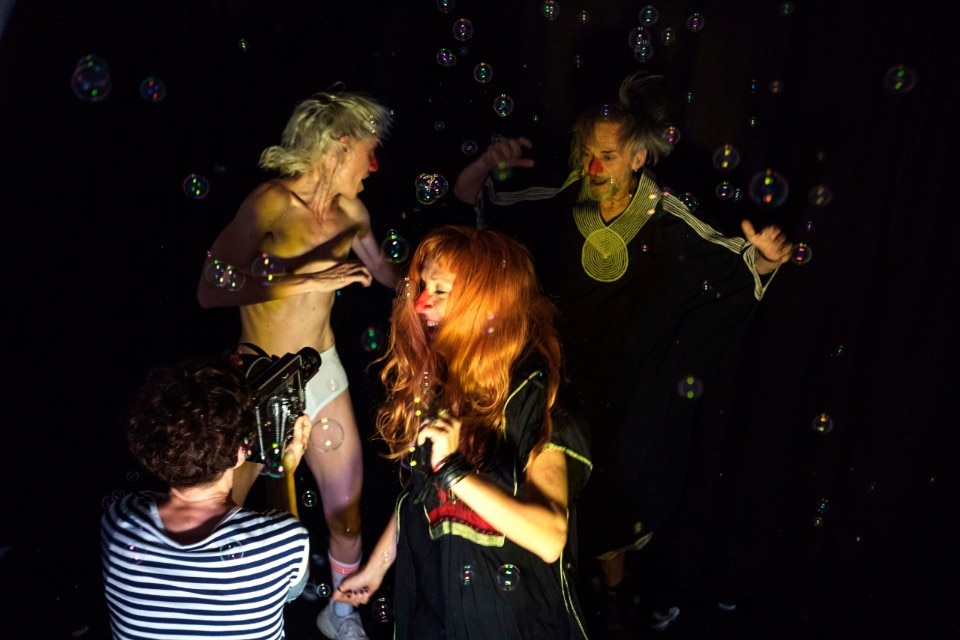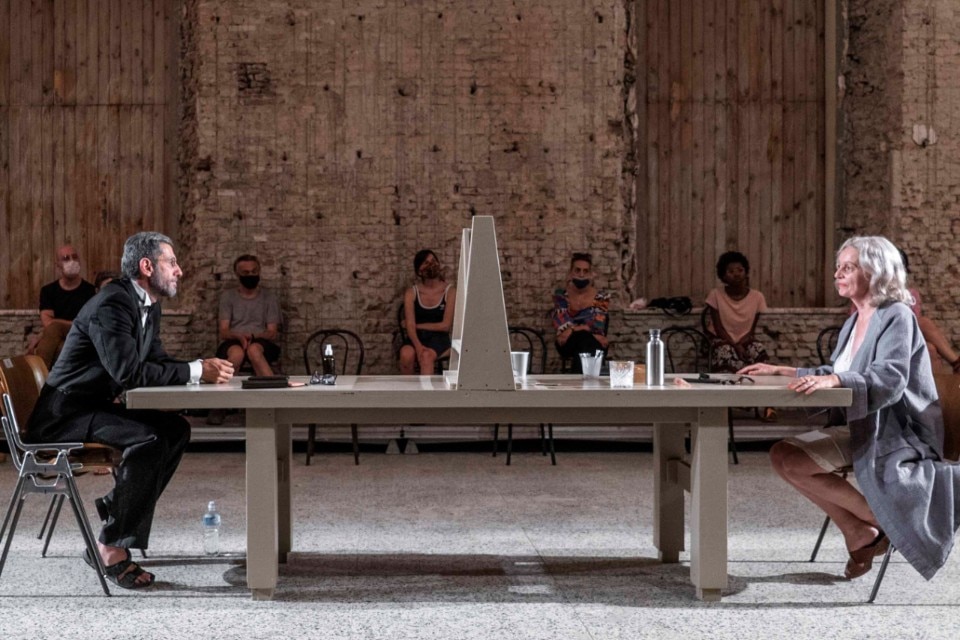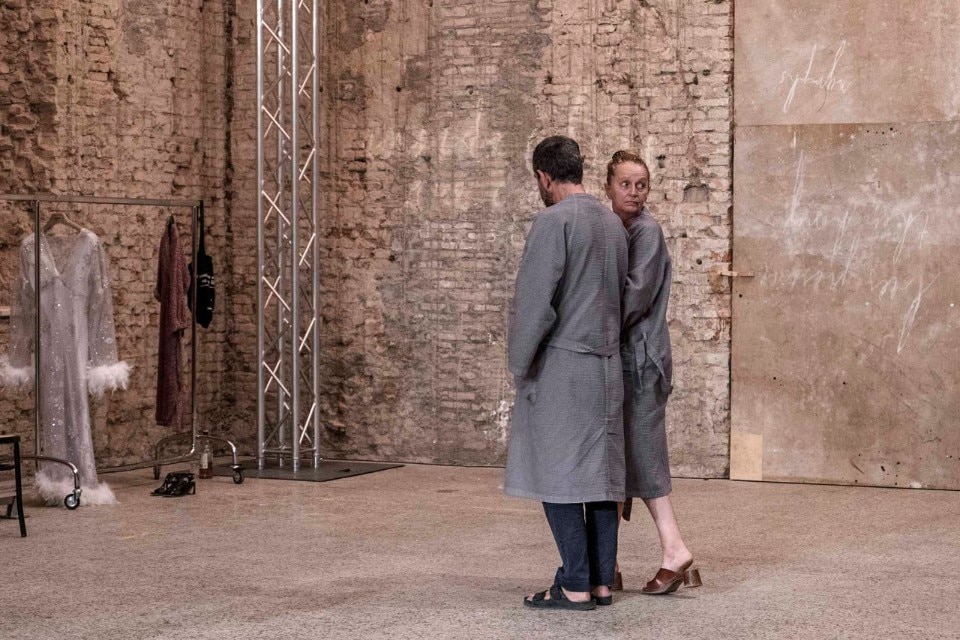“If you are a critic, don’t talk about me, talk about this story”. She is the Mexican-Chilean-Austrian artist Amanda Piña, and this is a key excerpt of her long, thrilling j’accuse opening her latest show, Climatic Dances. The plot is centred around the story of one of the Andes’s mountains, the symbolic place of Piña’s biographical landscape because part of her family history. This mountain now stands poisoned, eroded to the bone; the water springing from it has a toxic colour, she narrates.
If contemporary theatre has subverted the canons of its classic structure, destructuring functions and roles, in this introductory text – which is not artistic, but “personal”, as highlighted by the author herself – we necessarily go back to an essential conflict, to a demarcation line between a protagonist and an antagonist. In this case, the nemesis of Amanda Piña is Mark Cutifani, CEO of Anglo American, the London-based corporate that, we read on their website, aims to “rethink extraction to improve people’s lives”.
According to the artist, instead, the extraction culture is based on the sacrifice of the other: human lives in exchange of more or less precious materials. Perhaps, these are the very same materials that you are now employing to read this article.We live in a complex and contradictory world, and in a future that is present and fantastic.
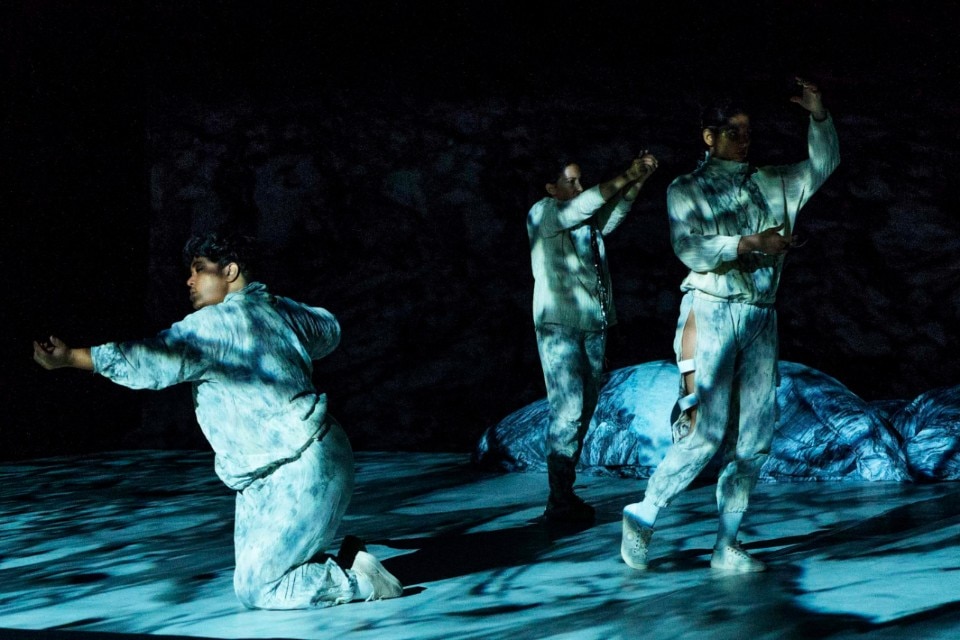
“Stay with the earth, do not consume it, do not extract”, is Amanda Piña’s prayer, before her words leave room to the performance that, after the initial stage, is all about images, sounds and movements.
Meanwhile, in Santarcangelo di Romagna, on the stage just outside the city where I attend the exhibition, the night is nearly breezy. The sky, full of stars.
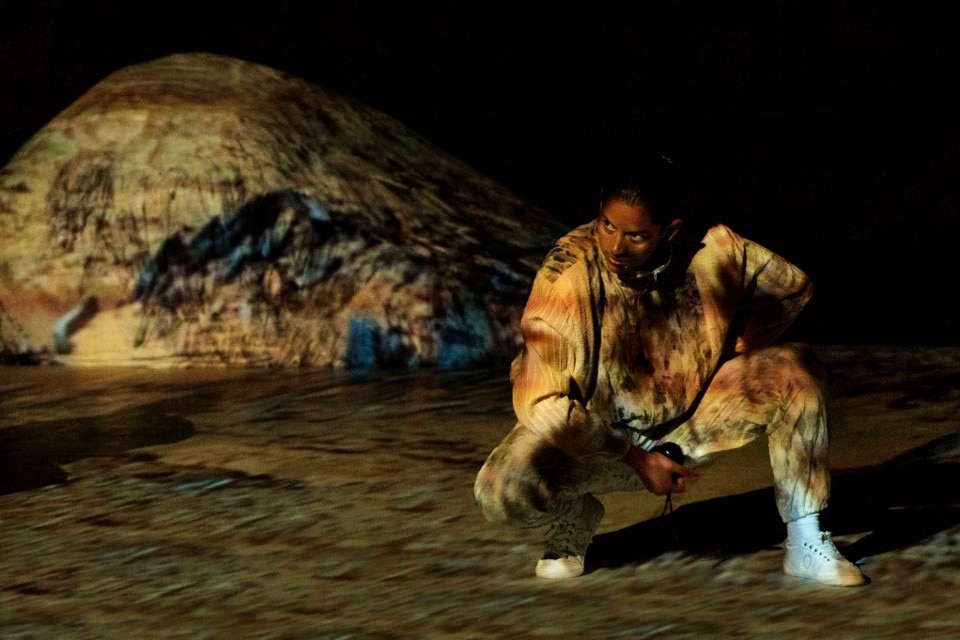
It has now been fifty years that, every summer, for a couple of weeks a year this sleepy Italian hamlet, typical, charming, and ancient like many other typical, charming, and ancient ones scattered across the peninsula, squeezed between the rivers Uso and Marecchia, and latched on to Mount Giove – to many, actually, just a hill that gives the name to the local sangiovese wine – turns into the capital of Italian theatre. Born as a street festival in hyper-freak years, Santarcangelo has lived through many fates, worn many identities, but mostly it has been the epicentre of what – paraphrasing Manuel Orazi – we may define as the Adriatic theatre city; a land fertile for the arts spanning from the Bologna of Teatrino Clandestino to the Ravenna of the Teatro delle Albe, and including the likes of Fanny & Alexander, Societas Raffaello Sanzio, Valdoca, Masque and Motus, the companies that from the Nineties have shown that another theatre is possible also in the land of the star performers, of the lyric and prosaic tradition.
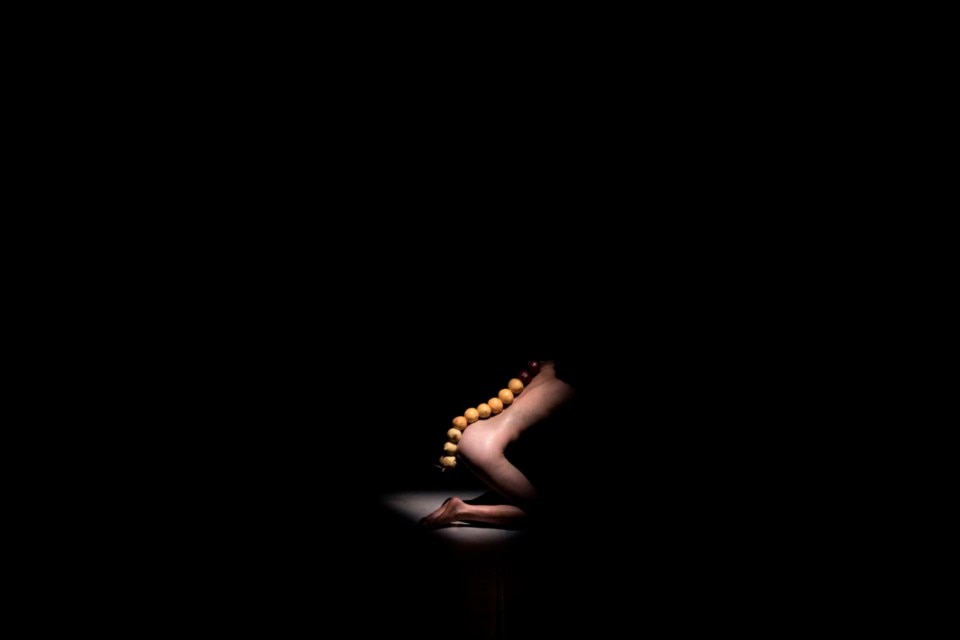
The Festival kicks off and in Santarcangelo it feels like a hoard of Birkenstock-wearing characters from Cyberpunk 2077 has descended into an Italian comedy film, pleasantly wandering among piadine kiosks and bars, while , in reality, they are perhaps plotting in the shadows to open a new branch of Goldsmiths University up in the sleepy Romagna village.
Anyway, here the people are bright and receptive. The elder locals can be overheard, sat outside cafes, talking with matter of cause – and a hefty dose of Romagna attitude – about Grand Bois, about the crazy drums of Bluemotion and of Fanny & Alexander with Tempo Reale who, the night before, have lit the streets of Santarcangelo up with blue lights and polyrhythmic grooves. Then, in the evening, everybody gathers in Piazza Ganganelli, the village’s great haven – where every Santarcangelo adventure begins and culminates – to admire the Liscio performance of the daughter of the genre’s godfather Raoul Casadei, who here stands as a semi-god.
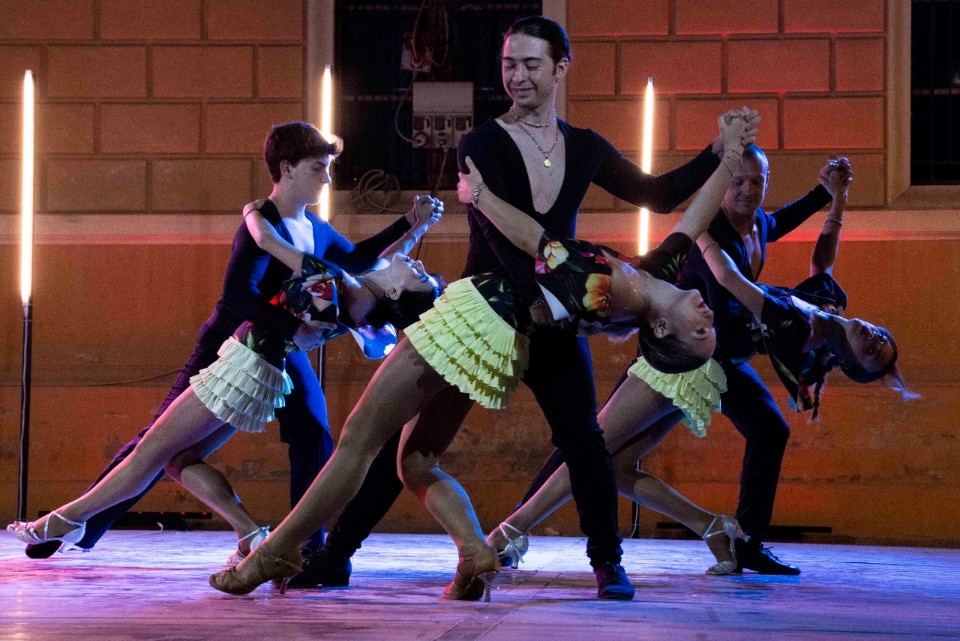
In the morning I met Motus’ Enrico Casagrande and Daniela Nicolò for a chat – theirs is the artistic direction of this fiftieth Santarcangelo – the two are on their toes. It is something to do with the audio system that, however, in theatre translates to stepping on stage free from stress, trusting the deus ex machina – it means a lot, after all. What’s keeping them on their toes is something that, in the end, can be easily solved and that must be dealt with with the most classic of Romagnan attitude: calmly and with no anxiety of sorts. Surfing the wave of this episode, I can fully dive into the spirit of the festival alongside one of the most important Italian theatre companies – as well as one of the country’s most revered abroad – who are at the service of the artists they invited here 24/7. Some of them are even youngsters at their first experiences. Sat on a sofa, in the calm shade of a Santarcangelo street corner, Enrico and Daniela tell me how the idea of curating the event is, perhaps, the most important thing they are taking home from this festival, “putting your knowledge at disposal of the artists, especially of the youngest.”
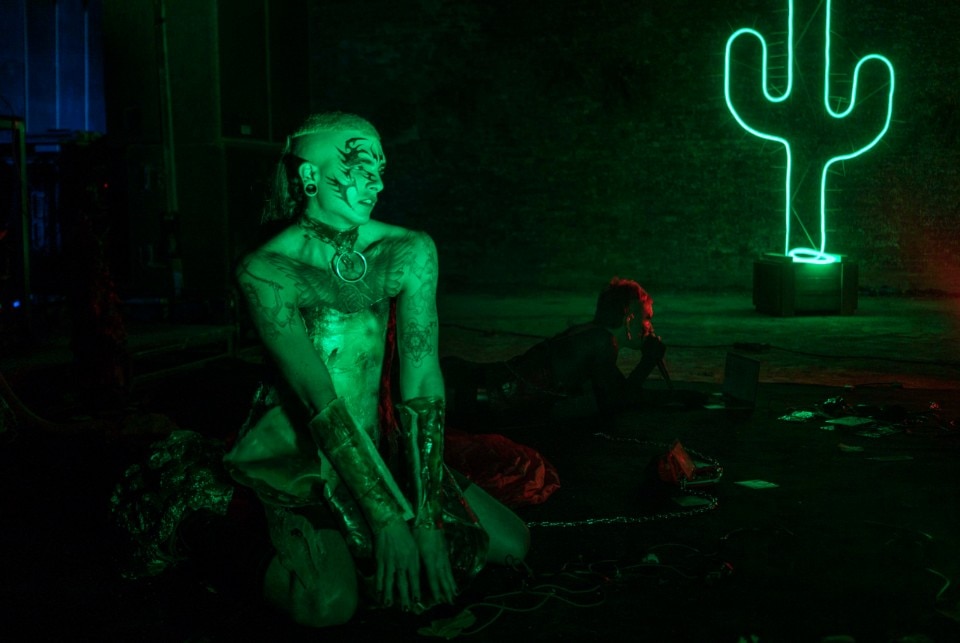
After having directed the fortieth anniversary edition, the Motus (here everybody calls them with a plural pronoun, like you do with bands, and so I will form now on) have been called in to repeat the experience ten years on, with the fiftieth edition that was supposed to take place in 2020. The advent of the pandemic forced them into a time loop to which this summer event represents both an end and an exit.
The programme was confirmed by December 2019, they explain, then Covid-19 messed things up. Last summer, after the first, hard lockdown, only five days of the showcase took place, adjusted by hosting Italian companies only. The event, though, was still able to attract 5,000 spectators. “Without wanting to sound pathetic, it represented the occasion to look at each other’s faces again and cry,” says Enrico Casagrande.
At that point the festival gambled on a winter edition. That one went too, replaced by the proposal of hosting one on Zoom. “But theatre is something else,” quickly concludes Daniela Nicolò. Meanwhile, a series of artist residencies were organised. Their excellent results are on show this summer: an edition that, spread over fifteen days, is an explosion of creativity. On the programme’s sheet, whose aesthetic taste definitely showed reminiscences of the Nineties – although not as much as the graphics of the Italian pavilion at the Venice Architecture Biennale –, next to the current date, 2021, stands out the symbolic target of 2050.
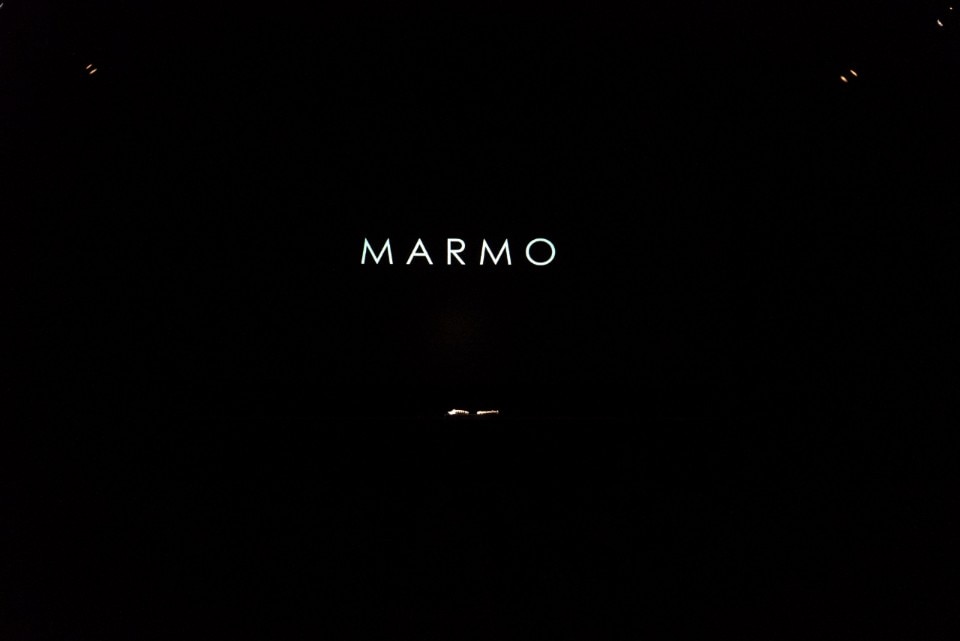
“To us the festival is like a performance, like a dramaturgy”, explain the Motus. “In our vision if you look at the bigger picture, you’ll understand how the pieces of the mosaic are all connected.” A tale that unwinds in the performances coming from across half the globe. “We wanted to work on the dystopian visions of sci-fi, a genre we have always been fond of,” say Enrico Casagrande and Daniela Nicolò. “Then, with the pandemic, we actually found ourselves deep into a dystopia.” What should have been a festival became a trilogy. “Fantastic Future”, which is the name of this event of “mutating medusas, cyborgs and fellow specimens”, comes from Isaac Asimov. “Humans shall fight for the survival of the entire planet Earth, because it is within it that they are rooted together with all the other forms of life: organic, artificial, non-human, cyborg, monstrous, inappropriate and inappropriable”, say Motus, quoting a text in the festival official guide wrote by Angela Balzano to introduce Promise of the Monsters by Donna Haraway. The American philosopher, auteur of the cyborg manifesto and theorist of hybrid identities and of the Chtulucene, is the muse of Santarcangelo 2050. An edition where the theme is mostly one: the planet we live on, and how we are living on it (badly, but we already knew so).
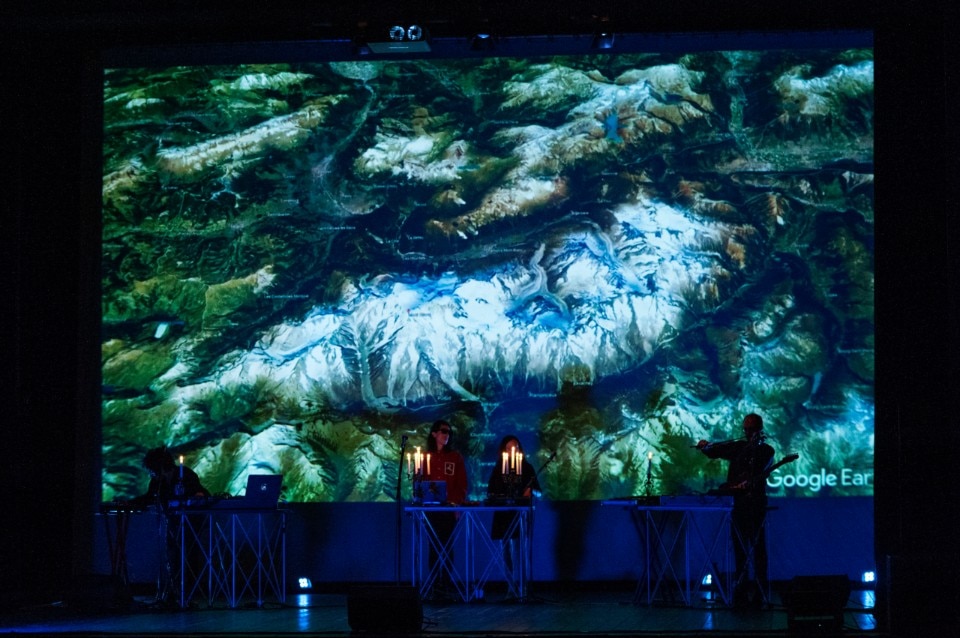
The festival performances perfectly fit the spaces they’re assigned to, explains Daniela Nicolò. Fifteen different locations, mostly open air, including the Sphaeristerium, the stunning scene of Nellospazio with two stages immersed in the green of the Baden-Powell park, and then some of the festival’s classics like the Pascucci school, the spot on the Marecchia river, Mutonia the village of the mutoids – who deserve a dedicated feature. In the meantime, you can look up on Google who they are, in case you don’t know – and, then, even the cities of Rimini and San Mauro Pascoli. Every night, a small community, always faithful to its ethos yet exactly identical to the others, moves from one venue to the other, meeting, debating, learning to know each other.
We wanted to work on the dystopian visions of sci-fi. Then, with the pandemic, we actually found ourselves deep into a dystopia (Motus)
This, after all, remains a theatre for the industry insiders, for the uber-passionates, who find much enjoyment from staying within their niche. And that’s a bit of a shame, in all fairness. After the isolation and the lockdown, theatre stands out as an epiphany. A necessary rediscovery of another way of living together, of trying to look at things from the perspective of a community often brought together by chance or by contingencies.
Theatre is touching, it stuns, it takes the piss of those tired categories of our world made of hyper-homologated language standards, whether it is in Ondina Quadri’s stage roamings in Emilio, in the post-Fellinian dialogues of Sovrimpressioni by Deflorian-Tagliarini, or, again, in the powerful statement on the Eight-hundreds global cooling elaborated by Madalena Reversa in Romantic Disaster.
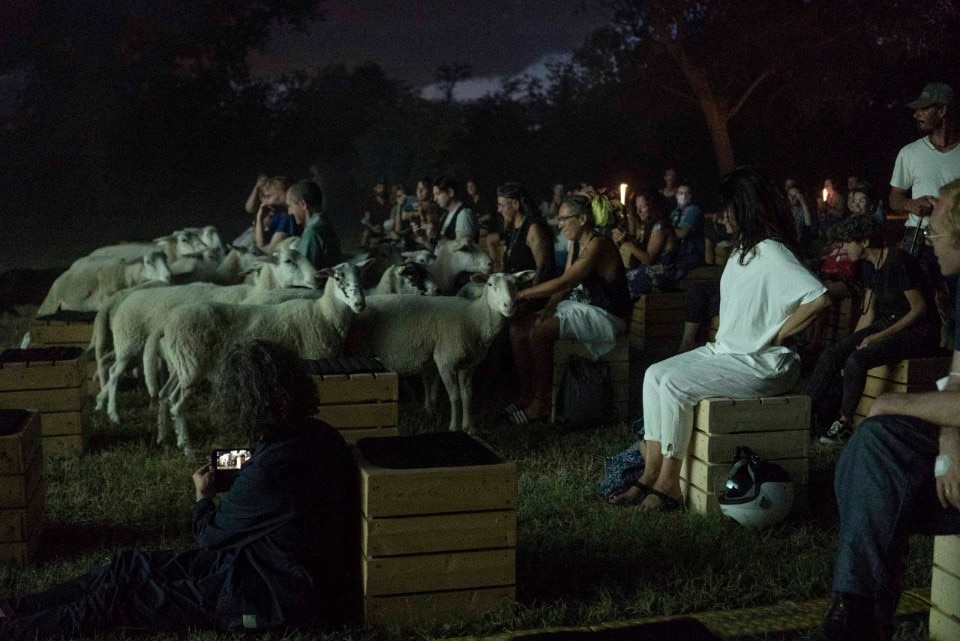
The square shape doesn’t exist in nature, and therefore nor do Instagram, the books, the buildings, and all those other things we take for granted. Theatre doesn’t exist as well. They all are artefacts created by men, who, if they had created the universe too, would have probably designed right angled orbs, and rectangular paths for planets to stop to only move again after a while.
So, Pablo Gisbert and Tanya Beyeler,the duo who founded El Conde de Torrefiel – she speaking a flawless Italian, him with an incroyable half black-half silver hairdo collected inside a Fidel Castro-style cap – guide me through one of the key moments of their Santarcangelo performance, Fracciones de tiempio, the first chapter of a long research on the “ultrafictions”, set to culminate into a show in May 2022.
The play is totally flooring. Sat open-air, the audience read a story off a giant screen. The sound here plays a key role, and the songs of Kyuss and Low become an integral part of the show’s dramaturgy. The theatre’s artefact blends with the reality of the setting. While El Conde manoeuvres everything from the mixing booth, one can’t grasp what is true and what isn’t, what is pre-recorded, and what improvised. It all feels a bit like a Daft Punk performance, I point out, without gathering too much approval.
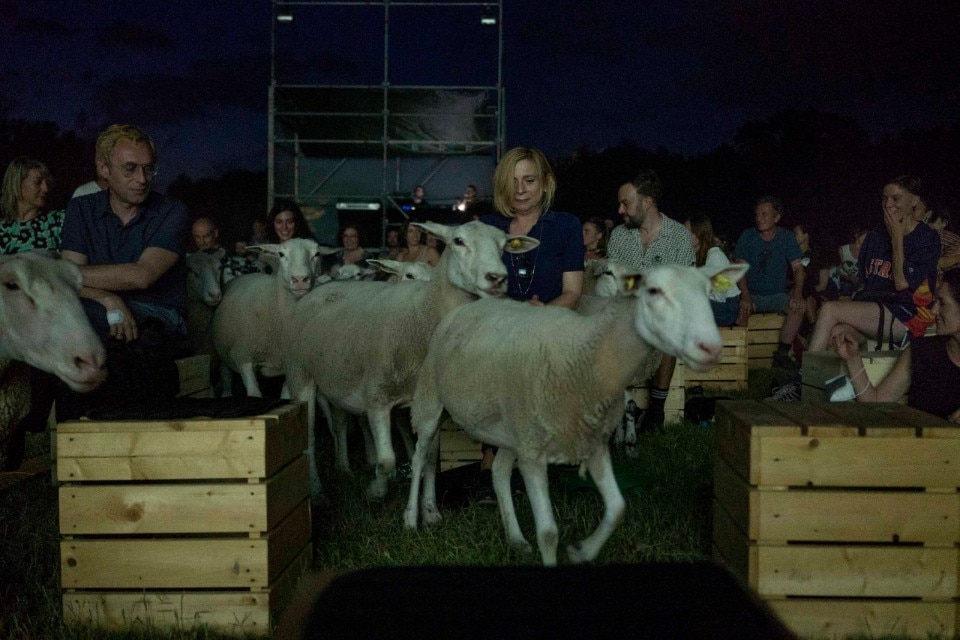
The artist residences scheme in Santarcangelo has been fundamental to make this work coherent with the environment of its setting. Pablo and Tanya tell me about the days spent writing, and the evenings when they'd go on the site to study it. To make it an integral part of the narration.The intuition of using reading as an integral part of the show is a winning one: in a world surrendered to images, El Conde ask their audience to use imagination. “The image, the square format, Instagram, you can’t tell when something is real, and when it’s not”, and so we come to the conclusion of the discourse we started with: “We wanted to narrate the agony of the image in the contemporary world”. Then, halfway through the show, a herd of sheep breaks through the scene. Unexpected, wonderful, peaceful and terrorising at the same time. You can tell who in the audience would love to caress the animals and those who crawl up their seats, as to look for a shelter in this feral tsunami. “To us, this is the moment when reality comes in and the fiction is over”, they say.
The lack of imagination is the beginning of every act of violence (from ULTRAFICCIÓN nr. 1)
“The lack of imagination is the beginning of every act of violence”, you can read on the screen at some point. That is a sentence that Tanya and Pablo point out many times. It is also the antidote offered by the theatre – at least, by a certain kind of theatre – to our alienated approach to image consumption. Without imagination, in fact.
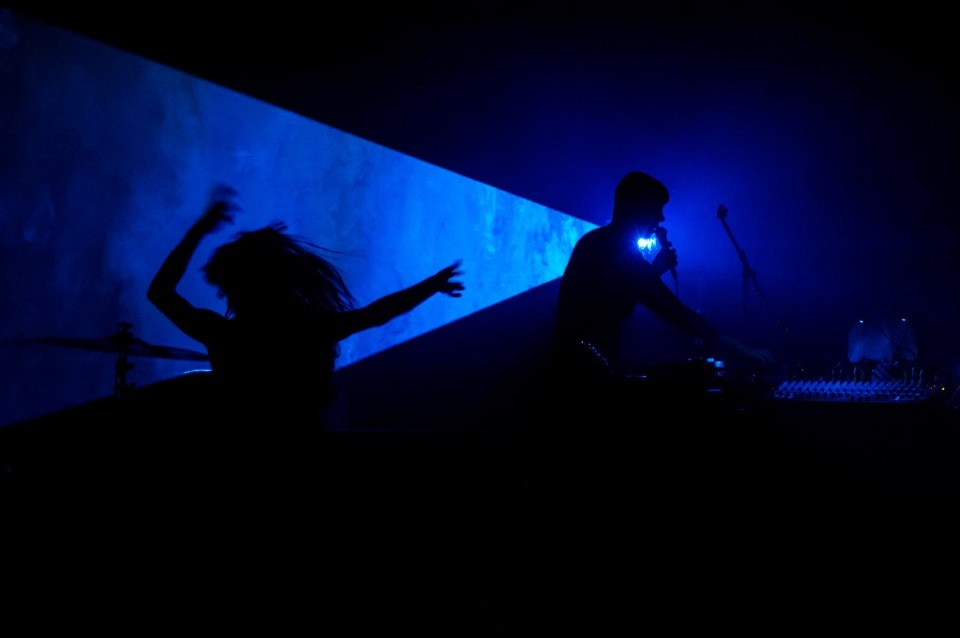
In the close-knitted connection between dramaturgy and reality in Conde's performance, there is also room for the guys of what here everybody simply calls “the camp”. How to be together, “cohabitative experiment to imagine a new collectivity”, is a project that began a year ago circa, and that is involuntarily reminiscent of the concept chosen by Sarkis for the 2021 Biennale. If in Venice, apart from a few episodes of subversion, the impression is that of stepping into a solarpunk utopia – where an array of simplistic solutions on how we will happily live together in the upcoming future dominate the pavilions –, here the collective living project clashed from the very start with the most prominent issue human beings always faced on this planet: the presence of other human beings.
Chiara Organtini, coordinator of this project, tells me, while sitting for a coffee, that the idea was conceived as a campus for college leavers of four important European schools connected to performative arts, and how it then morphed into an open call to other cultural disciplines, like illustration.
A few hundred metres behind the park where I attended Ultraficciones, stands the field hosting fifty guys in as many tents. Guys who, according to the fiction imagined by Conde, at some point join in an illegal rave interfering with the performance, including a car driving into the scene – with many spectators left wondering whether that was theatre fiction or reality.
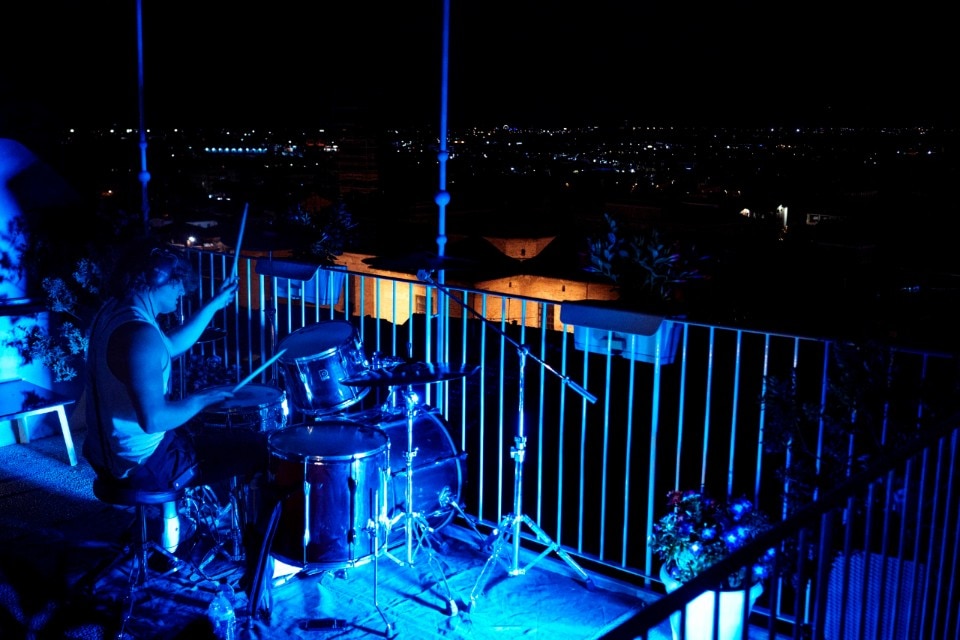
The camp, though, is an incredibly realistic experience, and not an ultra-fictional one. Access to the site for external visitors is only planned for the last day of the event, on July 18th. One week before, at the time I am attending the festival, though, this visit seems impossible to make; the guys have simply rejected the possibility to do so. A point of view that many may not share, but that I fully understand: they have been settled there for a little time now and it would, more or less, feel like me having to show the draft of this article to somebody just randomly met on the streets. The camp, Chiara tells me, is organised with solar energy-powered showers, with fridges and other services. The boys and the girls have to learn how to live together. They begin their days at 9am, with an assembly where they confront each other’s thoughts, then they work split into five groups. The themes – each with its own guide – feature space, communication (and magic rituals), the non-human ecosystems, politics, imagination (once again, imagination returns!) and – I admit, the topic that mostly stunned me – the “savage”. Also involved in the latter project are five kids from the Scuolina Selvatica of Sarsina, a “parental educational programme that follows the pedagogy of the woods” – I read on their Facebook page.
The afternoon that anticipates my return home, a scorching Saturday, I leave the shopping mall Le Fornaci to my back – a significant example of industrial archaeology where an old site was converted into a shopping center – and I walk among semi-detached houses leading to a pathway crossing the park.
Hading past a globe-shaped monument surrounded by litter bins and dedicated to Robert Baden-Powell, the founder of the scout movement, I walk next to a group of youths who are descending towards the prefabricated buildings hosting the toilets. Careful to keep myself distant from the camp, walking next to its site I can see their tents in the distance, among the trees. I’m not here to spy, I keep repeating myself, I’m looking for something else. From the woods come sounds of percussion and undefined voices. I spot a group of girls sitting on a platform in the lotus position. They are dressed in the fashion of those yoga gatherings that are now particularly on-trend. I walk up the hill, stopping by a demarcation wall. I cross my path with that of many passers-by, there’s a guy with a bike who is busy reading on a bench. Not too far from me, is a small group of youngsters from the camp. I’d like to go nearby, but they would most definitely spot me.
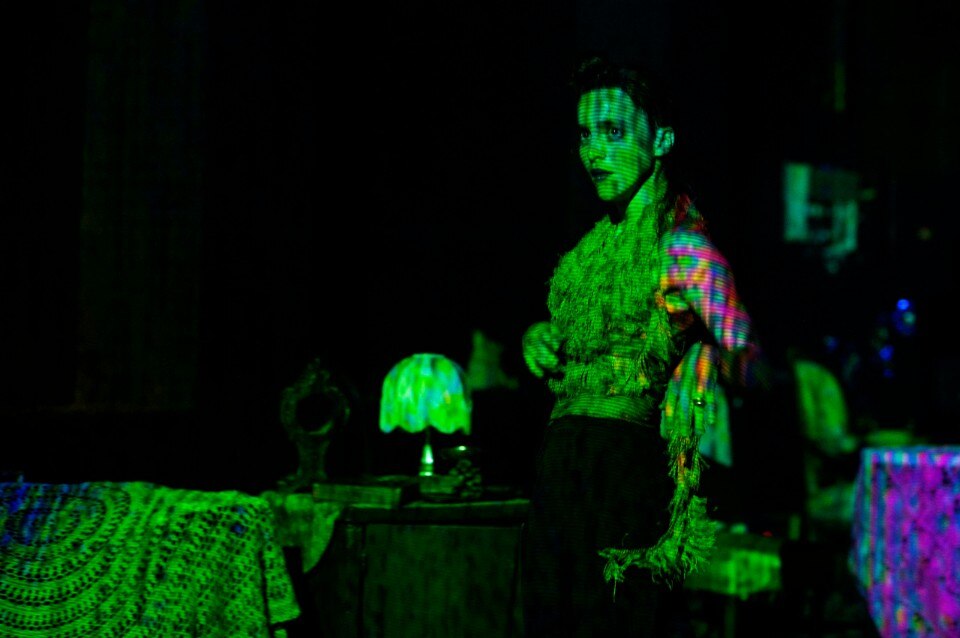
I leave the woods, crawling up a street and sitting on a bench in the sun. From here you can contemplate everything, up to the sea. I cannot help but think of GiacomoLeopardi, and that instills a giggle in me. A boy and a girl stare into the void. “I reckon it takes ten minutes,” she says. “More like fifteen,” he replies, pointing with his finger to the blue and yellow box of the Rimini Ikea standing exactly halfway between us and the coastline. I stand up and after a few steps I reach the highest point in Santarcangelo. It’s hot, very hot. I picture the soil under my feet completely dug into and toxic like Amanda Piña’s mountain, or icy like in the verses by Shelley sung in Romantic Disaster. I imagine a village that absorbs the festival’s imagination and turns it into reality. Then, a procession of cars brings me back to reality. Leading it is a metal grey sedan with a ribbon, a wedding is taking place, the guests crawl up the cobbled road in their smart clothes. I walk past the scene, ending up on the other side of town.


